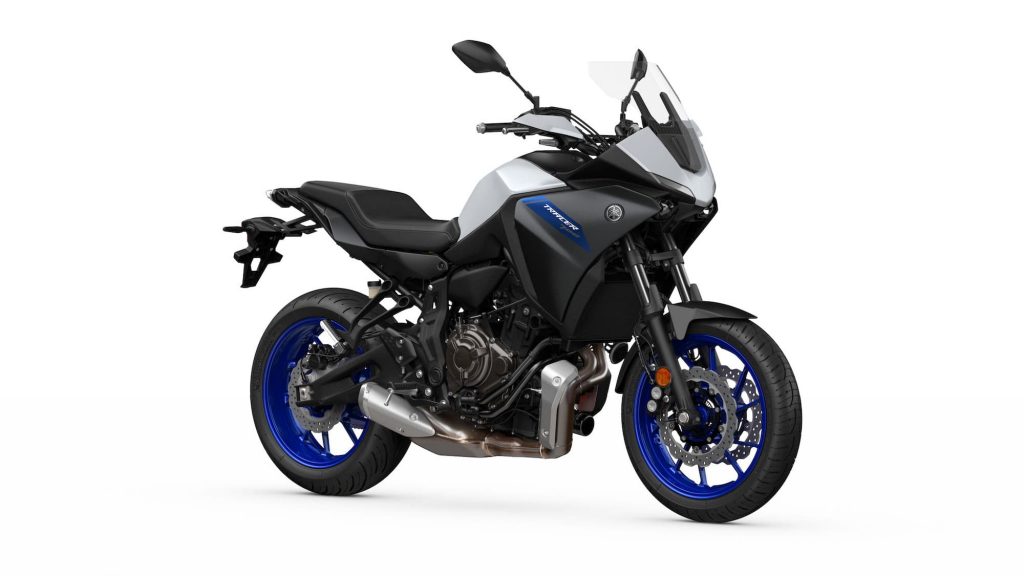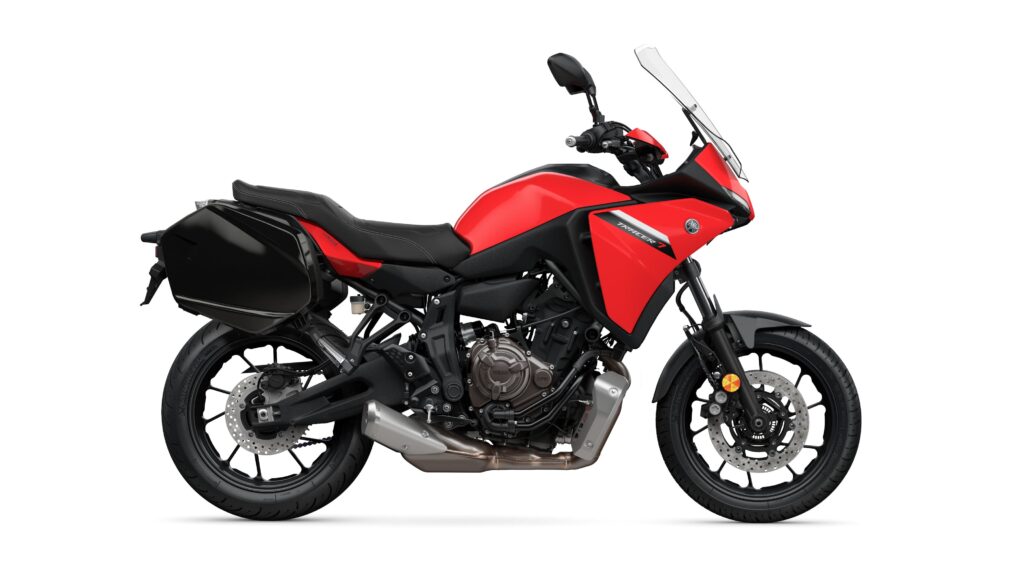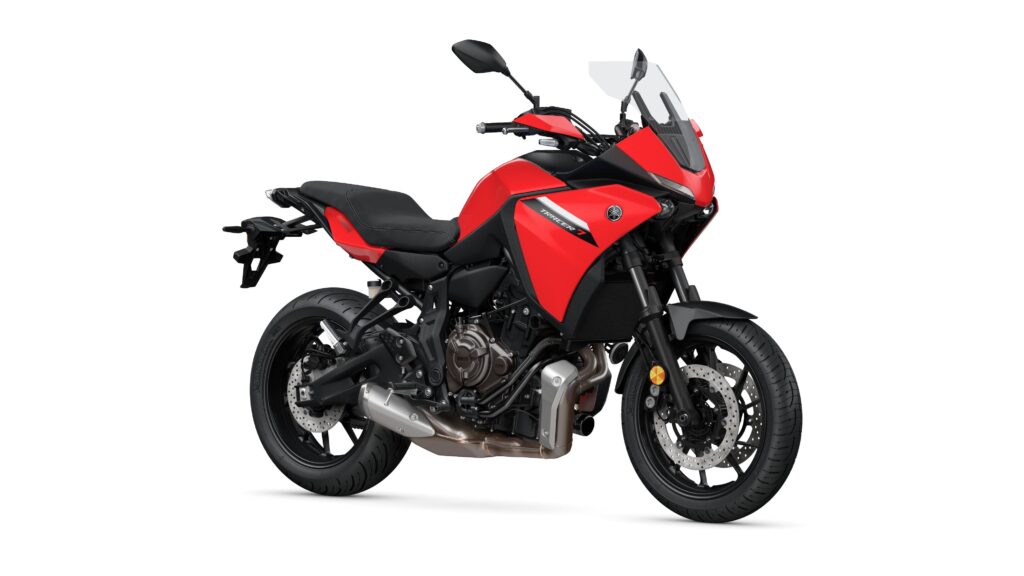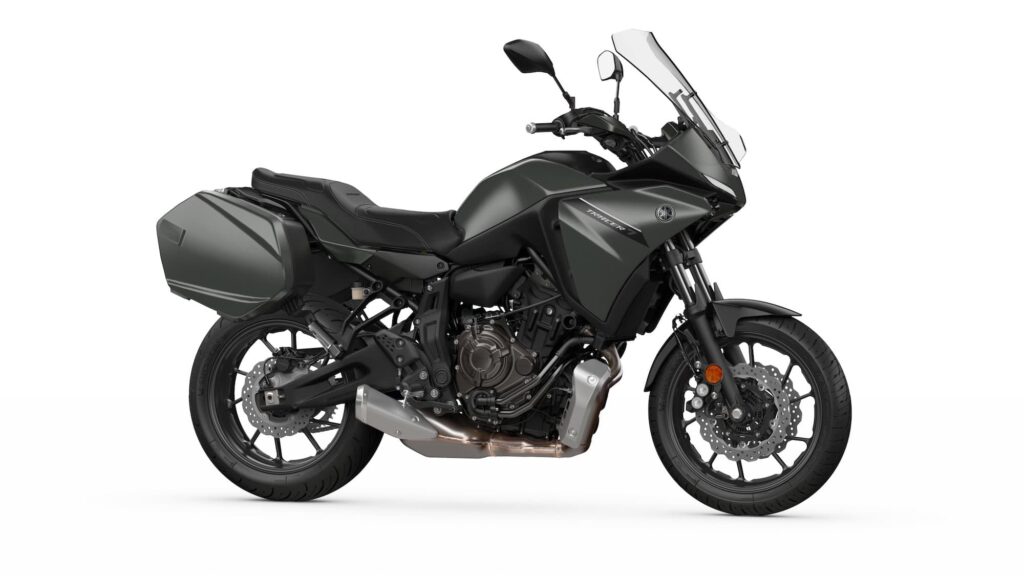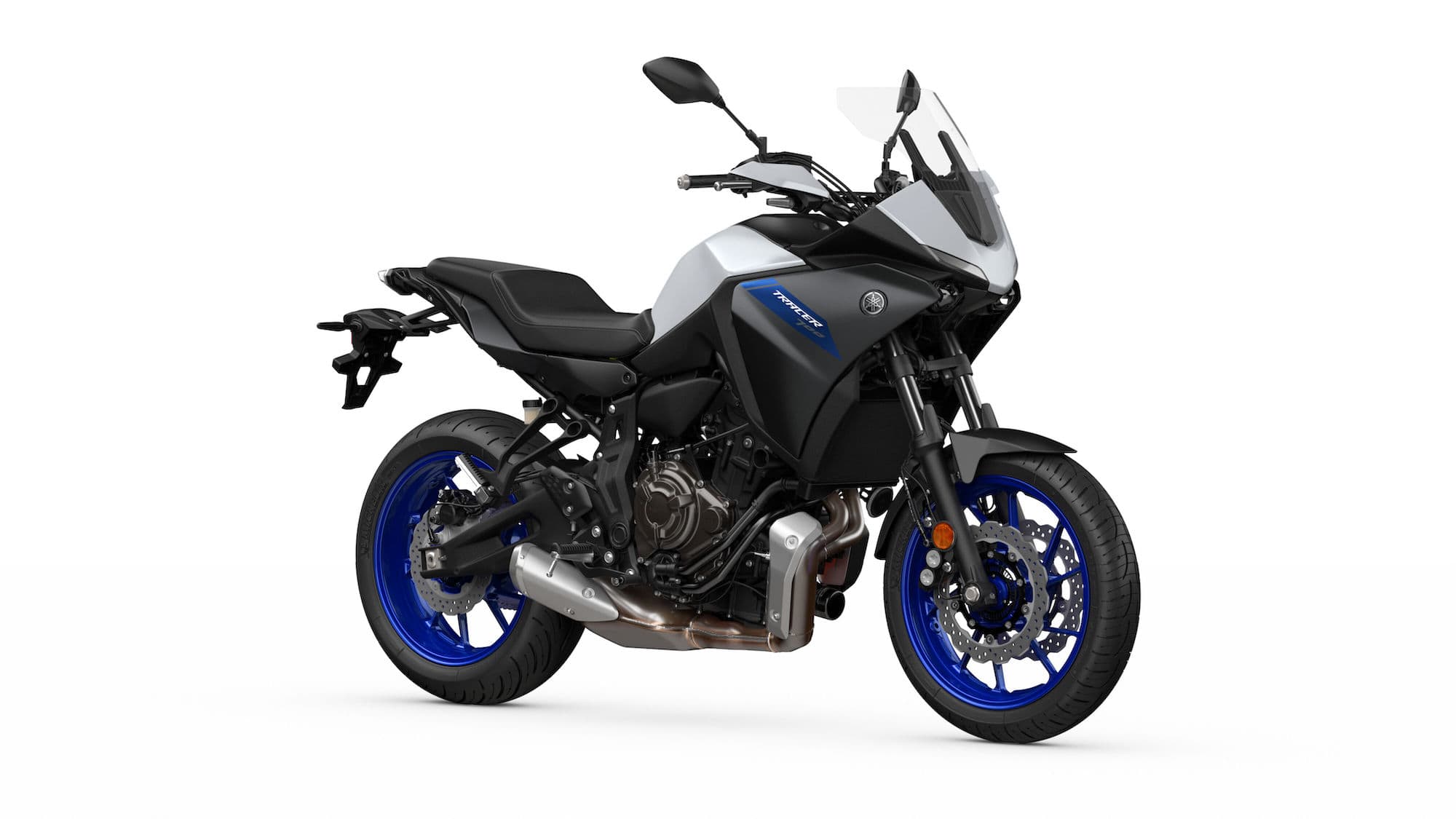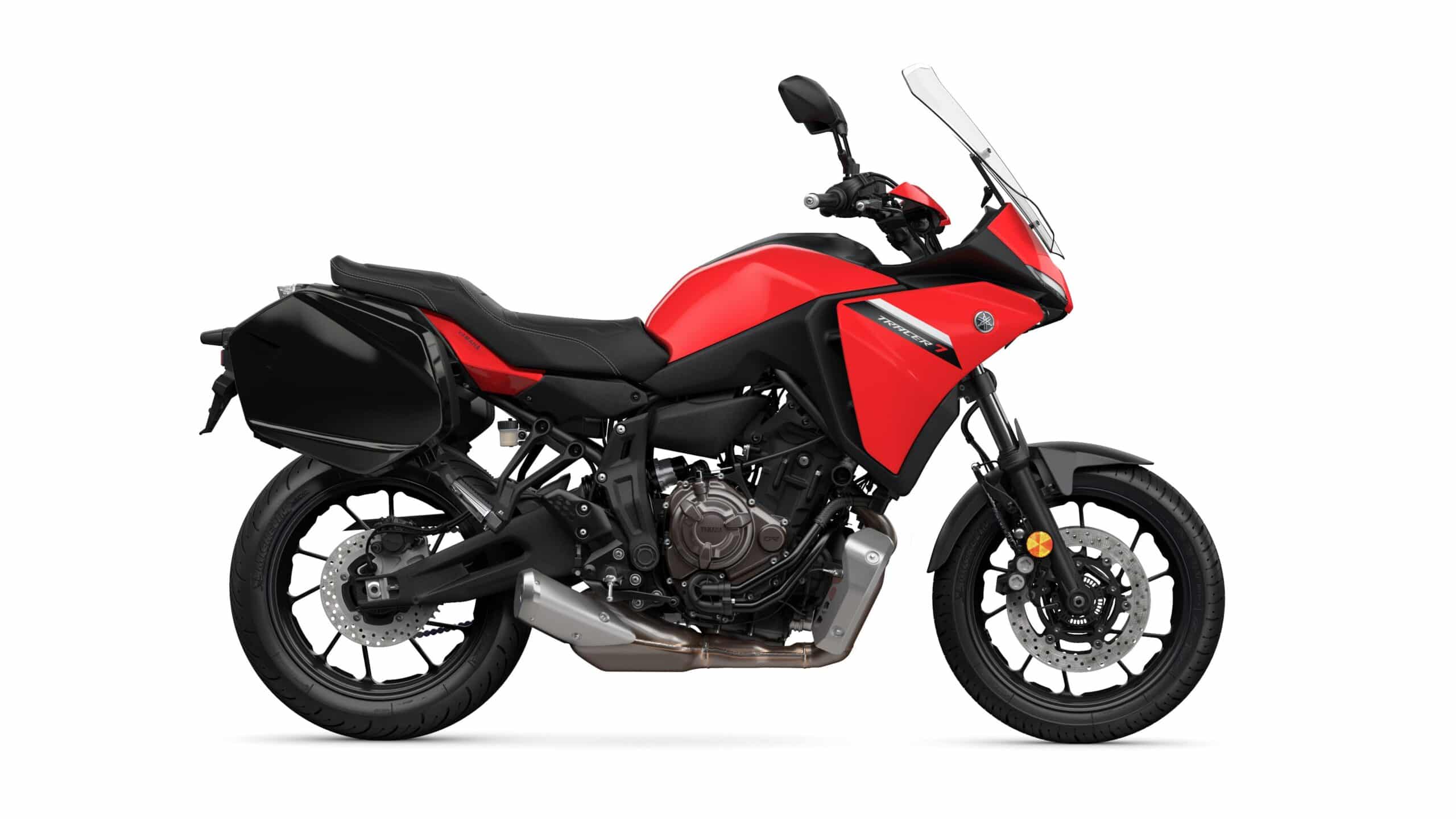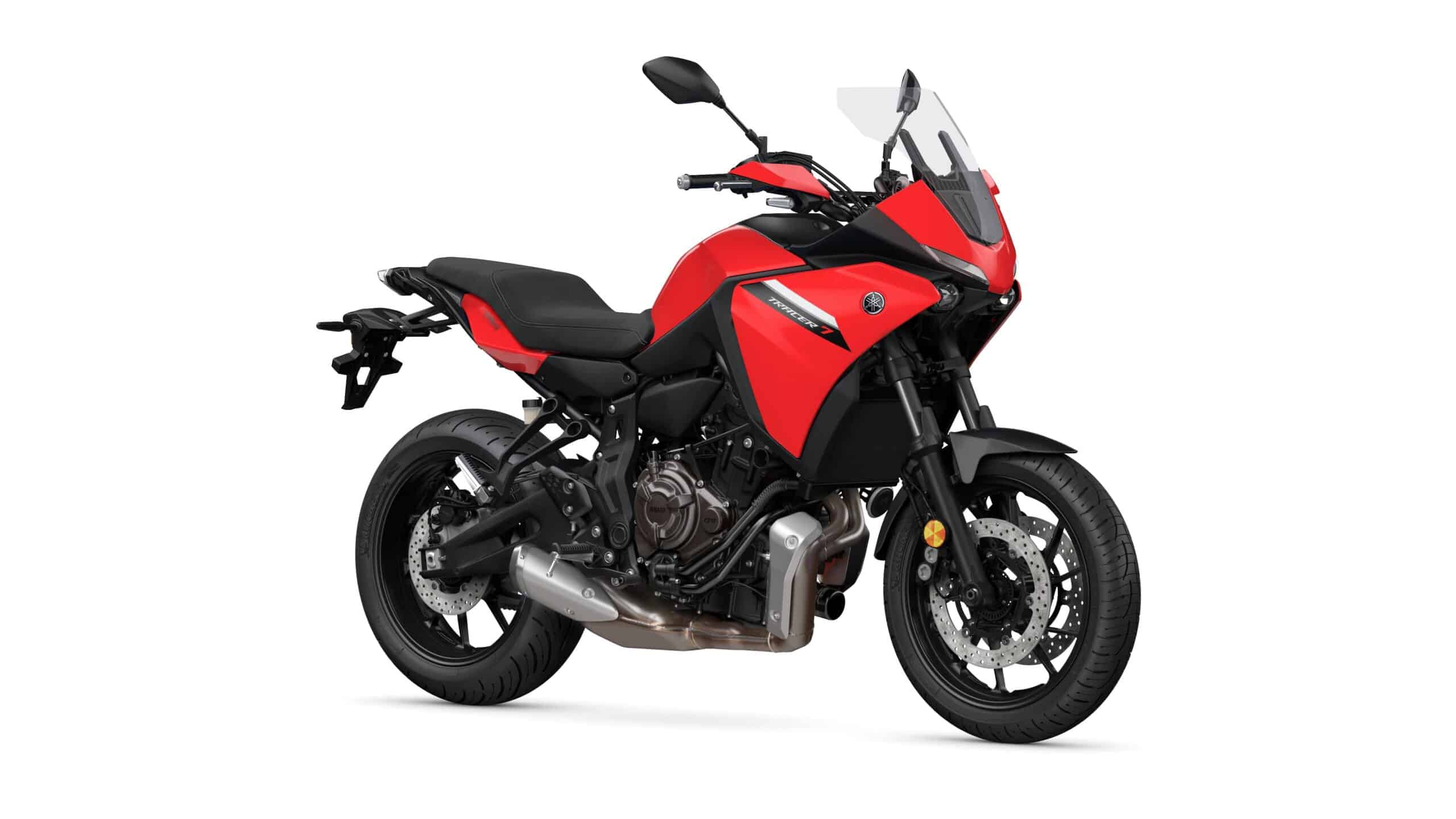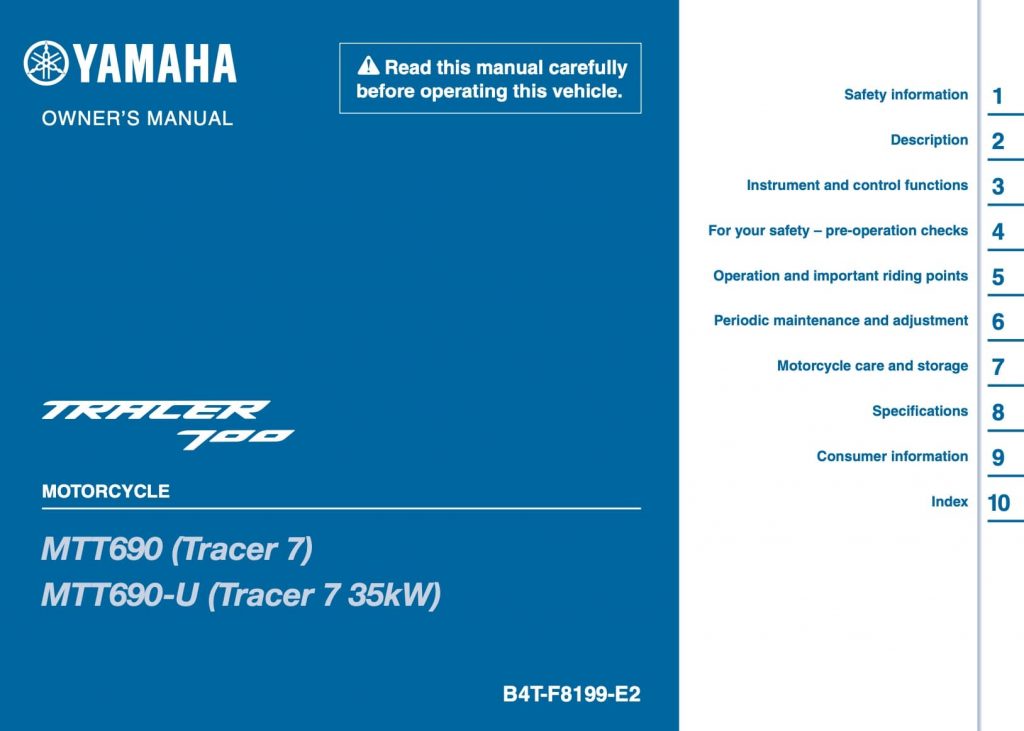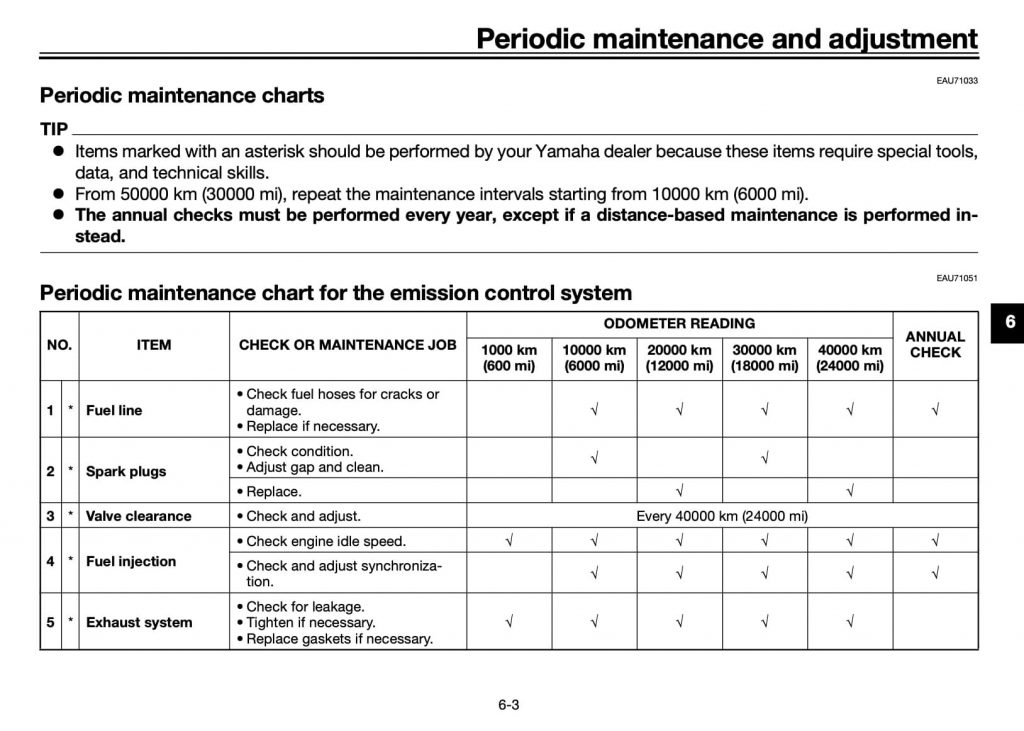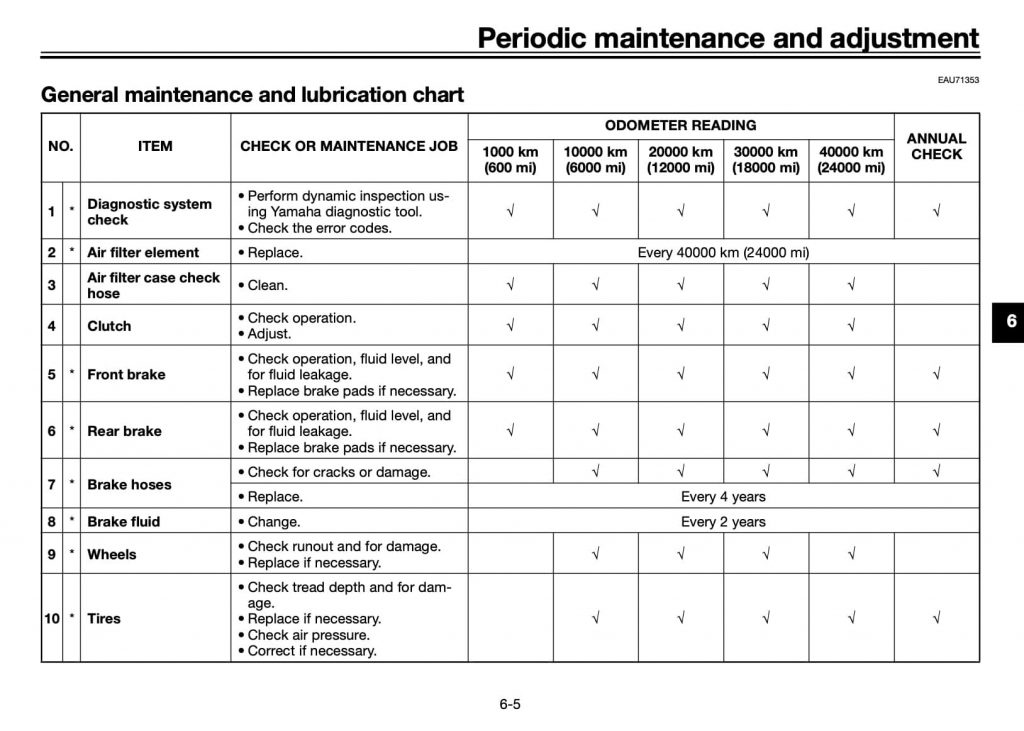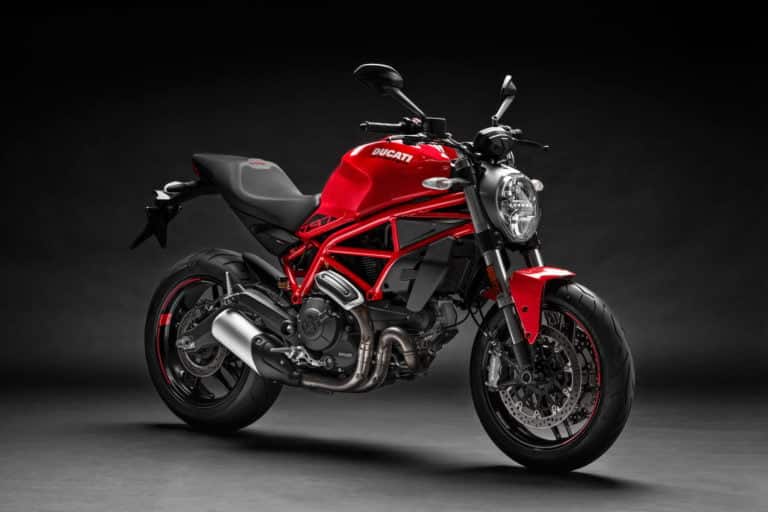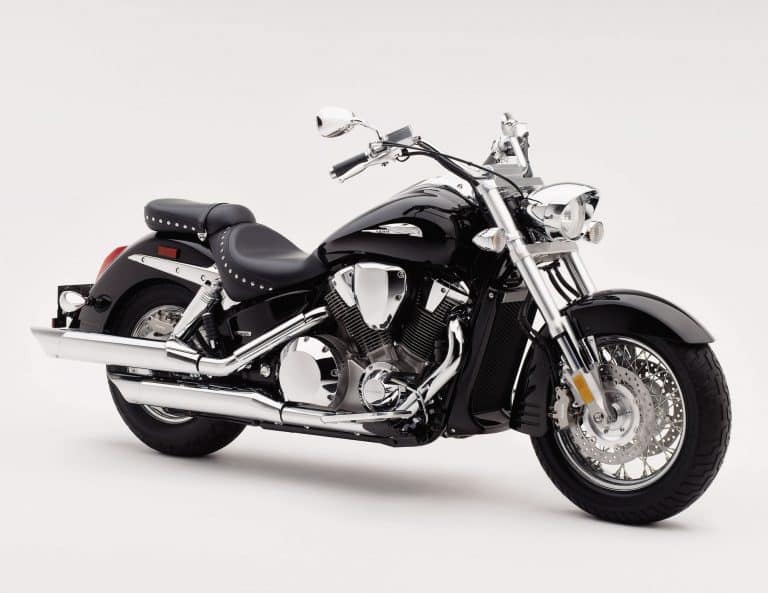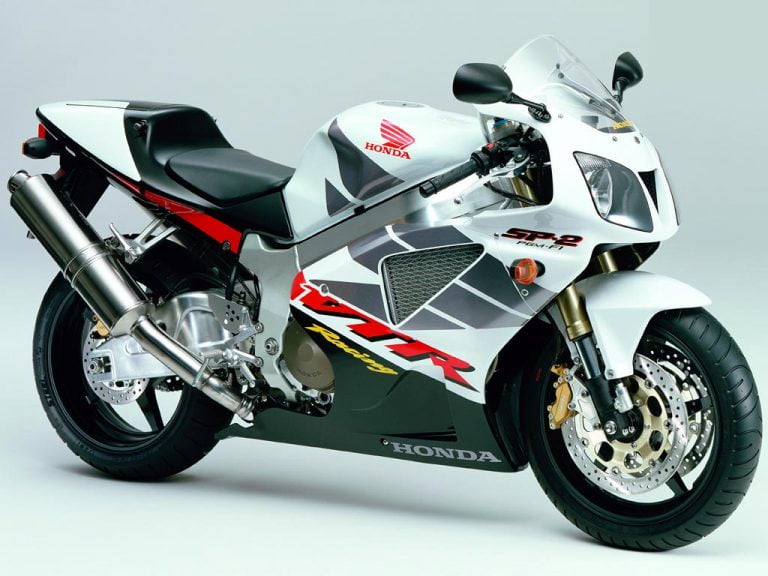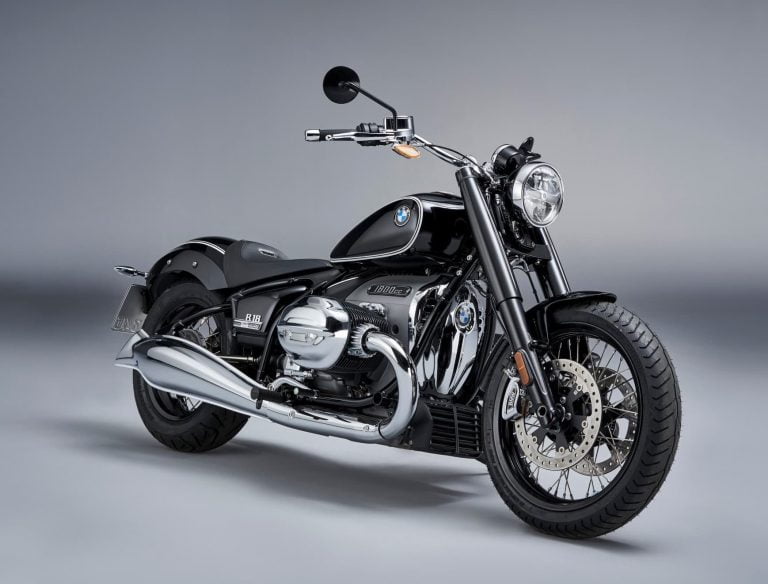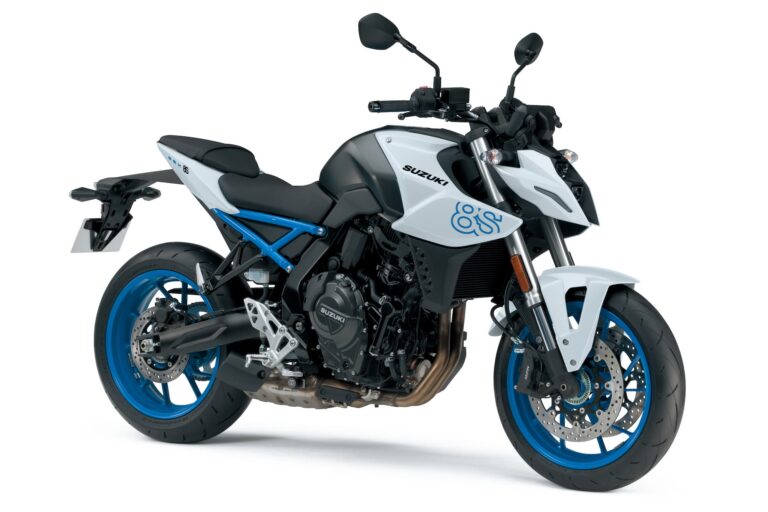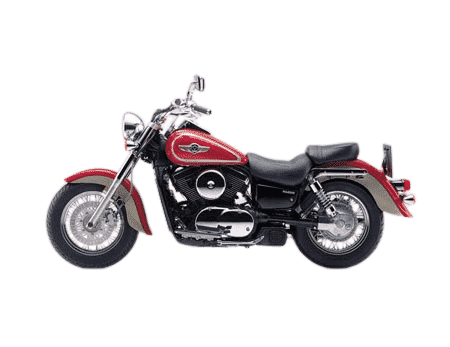Yamaha Tracer 7 (2021+) Complete Maintenance Schedule and Service Intervals
This is the maintenance schedule and associated service intervals for the Yamaha Tracer 7, Yamaha’s middleweight adventure sport bike.
Yamaha updated the Yamaha Tracer 700 for Euro 5, also updating the styling dramatically, and released it as the Yamaha Tracer 7 for the 2021 model year. They also released it as the Tracer 7 GT, with some long-range touring options as standard.
The core of the Tracer 7 is the CP2 engine found in a number of other Yamaha middleweights, like the Euro 5 Yamaha MT-07 notably. It’s a 689-cc liquid-cooled parallel twin with a 270-degree crankshaft, which gives it plenty of character for a middleweight. Peak power in the 2021+ model is a slightly lower 54 kW (73 bhp) at 8750 rpm, a victim of emissions regulations, and peak torque is 67 Nm (49 lb-ft) at 6500 rpm.
The final drive is via a six-speed transmission and a chain.
Here are all the motorcycles that share the same CP2 engine:
- Yamaha MT-07 (formerly the FZ-07) — the naked roadster
- Yamaha Ténéré 700 — the adventure bike
- Yamaha XSR700 — the “retro” roadster
- Yamaha YZF-R7 — the sport bike
- Yamaha Tracer 700 — the sport touring bike (Europe/APAC only). Yamaha Tracer 7 from 2021 onward.
This site has links for things like oil and spark plugs from which we earn a commission (which unfortunately nobody can save, not even us). If you appreciate this work, then please use those links. Thanks!
Yamaha Tracer 7 Service Intervals
The minor service interval between oil changes for the Yamaha Tracer 7 is every 10000 km / 6000 miles or 12 months.
At every service, change the oil, either check or replace the spark plugs, and do a host of checks (see below for the regular service checklist).
The major service (valve clearance inspection) for the Yamaha Tracer 7 is every 40000 km. The first valve inspection is most significant.
Also be sure to regularly refresh your coolant and brake fluid, even if the bike has not received much use between services.
What you need to service the Yamaha Tracer 7 — Consumables and Special Tools
If you’re servicing your own Yamaha Tracer 7, you’ll need the following specific consumables recommended by the manual.
| Part | Yamaha Tracer 7 spec |
|---|---|
| Oil | Yamalube 10W-40. The manual suggests Yamalube of this grade, and it’s affordable on Amazon with a solid 5-star rating. Other 10W-40 lubricants should do fine, as long as they meet JASO standard MA. Torque for the oil drain plug is 43 Nm / 32 lb-ft. |
| Oil filter | Change the filter every second oil change. Either get a stock one (part 5GH-13440-50-00, used for many Yamaha products) or the Hiflofiltro HF204RC. Torque for the oil filter is 17 Nm/13 lb-ft. |
| Chain maintenance | Use either Motul chain paste (very well-liked), or a complete Motul chain care kit which includes a brush etc. |
| Engine coolant | Yamaha recommends Yamalube coolant, but use any coolant that’s a 50/50 ethylene glycol pre-mix. You can either use pre-mix or concentrate (for which you’d need demineralised water). |
| Cable lubricants | Keep your cables lubricated! Protect all cable life is a good generic lubricant. |
| Spark Plugs | NGK LMAR8A-9. This is what the manual suggests. Make sure it’s gapped correctly to 0.8-0.9mm (get a gapping tool) and torqued 13 Nm / 19 lb-ft. |
| Air filter | Yamaha part number for the OEM air filter is 1WS-14450-00-00. You can also get the K&N equivalent, YA-6814, same as for the predecessor. |
| Brake pads | People regularly replace OEM units with EBC double hardened brake pads for extra life and better brake feel (and less fade). You need two sets for the front (FA252HH) and rear (FA174HH). |
| Grease | Use a good lithium soap-based grease and silicone grease for external pivot points. |
Yamaha Tracer 7 Maintenance Schedule
Below is the maintenance schedule for the Yamaha Tracer 7.
The content is the same as in the manuals, though presented in an easier-to-read way. For example, items like “change the engine oil” are moved to the top rather than buried down below, and maintenance related to emissions is combined with general maintenance.
Further, we separated out an “inspection checklist” from the rest of the maintenance schedule to make things easier to read.
Yamaha recommends that for everything other than lubricating the chain, changing the oil, and greasing external parts, you should have a Yamaha mechanic perform the service.
Break in service
The break-in service isn’t shown below as a dealer usually does it. Do the break-in at 600 miles / 1000 km, and do the following:
- [Dealers] Do a diagnostic system check
- Change the oil and filter
- Check the steering bearings
- Check the brake function and fluid level
- Check the clutch
- Clean the air filter case check hose
- Check all lights and switches, including the side stand switch and brake switches
General service schedule
General notes on the maintenance schedule for the Yamaha Tracer 7:
- After the final service on the chart, keep going, following the pattern shown (every 1-4 services)
- Some items (e.g., valve clearance check) have a distance interval only.
| ‘000 km | 10 | 20 | 30 | 40 | Every |
|---|---|---|---|---|---|
| Perform inspection checklist (see below) | ✓ | ✓ | ✓ | ✓ | Year |
| Change engine oil (Yamalube 10W-40) while engine is warm. | ✓ | ✓ | ✓ | ✓ | Year |
| Replace oil filter (HF204RC) | ✓ | ✓ | |||
| Check spark plug condition. Adjust gap and clean. | ✓ | ✓ | |||
| Replace spark plugs (NGK LMAR8A-9) | ✓ | ✓ | |||
| Check and adjust valve clearance. | ✓ | 40000 km | |||
| Clean air filter check hose | ✓ | ✓ | ✓ | ✓ | |
| Replace air filter (K&N YA-6814) | ✓ | 40000 km, or more often if riding in dusty conditions | |||
| Replace brake hoses | 4 years | ||||
| Change brake fluid (Castrol DOT 4) and rubber parts of brake master cylinders and calipers. | 2 years | ||||
| Lubricate swingarm pivot bearing with lithium soap-based grease | 50000 km | ||||
| Check steering bearing assemblies for looseness. | ✓ | ✓ | |||
| Moderately repack steering bearings with lithium soap-based grease | ✓ | ✓ | |||
| Change coolant (ethylene glycol pre-mix) | 3 years |
Standard inspection checklist
Below is the checklist of items to do at every service per the schedule above.
Items marked [D] need specialist dealer tools.
| Yamaha Tracer 7 Standard Inspection Checklist |
|---|
| [D] Perform dynamic inspection using Yamaha diagnostic tool. Check the error codes. |
| Check throttle grip operation and free play, and adjust if necessary. |
| Lubricate throttle cable and grip housing (Protect All Cable Life). |
| Check clutch operation. Adjust or replace cable. |
| Lubricate moving parts and cables thoroughly (lithium soap-based grease, Protect All Cable Life). |
| Check lights, signals, and switches operation. |
| Check sidestand switch operation and replace if necessary. |
| Check brake switch operation, front and rear. |
| Check / adjust headlight beam (if necessary) |
| Check and adjust fuel injection synchronization. |
| Check fuel hoses for cracks or damage. Replace if necessary. |
| Check brake hoses for cracks or damage, and for correct routing and clamping. |
| Check cooling system hoses for cracks or damage. Replace if necessary. |
| Check engine idle speed |
| Check front brake operation, fluid level, and for fluid leakage. Replace brake pads if necessary (EBC FA252HH x 2). |
| Check rear brake operation, fluid level, and for fluid leakage. Replace brake pads if necessary (EBC FA174HH). |
| Check tyre tread depth and for damage. Replace if necessary (see spec below). |
| Check and adjust tyre pressure as necessary. |
| Check front fork operation and for oil leakage. Rebuild/ replace if necessary. |
| Check shock absorber operation and for oil leakage. Replace if necessary. |
| Check wheel bearings for smooth operation, looseness, or damage. Replace if necessary. |
| Check swingarm pivot bearing operation and for excessive play. |
| Lubricate rear suspension link pivots with lithium soap-based grease lightly |
| Check all chassis fitting and fasteners, and tighten/replace as necessary |
| Lubricate brake lever pivot shaft with silicone grease lightly. |
| Lubricate brake pedal, clutch lever, and shift pedal pivot shafts with lithium soap-based grease lightly |
| Check sidestand pivot operation. Lubricate with lithium soap-based grease lightly. |
| Check crankcase breather hose for cracks or damage. Replace if necessary |
| Check exhaust system for leakage. Tighten and/or replace gaskets as necessary. |
Maintaining the Chain of the Yamaha Tracer 7
It’s important to maintain your chain on the Tracer 7, as on any chain-driven motorcycle, but particularly on an all-weather bike like the Tracer that you’ll likely use for commuting in the rain, dirt, etc.
Use a good-quality chain lubricant like Motul chain paste, or a Motul chain care kit which comes with a couple of handy tools to maintain the chain.
Yamaha recommends you follow the following chain maintenance schedule every 1000 km / 600 mi and after washing the motorcycle, riding in the rain, or riding in wet areas.
| Chain maintenance item |
|---|
| Check drive chain lubrication condition, lubricating if necessary (Motul chain paste) |
| Check drive chain slack, alignment, and condition, adjusting / replacing if necessary |
Yamaha Tracer 7 Tire size and pressures
The following are tire sizes and tire pressures for the Yamaha Tracer 7.
| Wheel | Tire Size | Tire Pressure (cold) |
|---|---|---|
| Front | 120/70-17 M/C (58W) | 2.5 bar / 250 kPa / 36 psi |
| Rear | 180/55-17 M/C (75W) | 2.9 bar / 290 kPa / 42 psi |
About the Yamaha Tracer 7
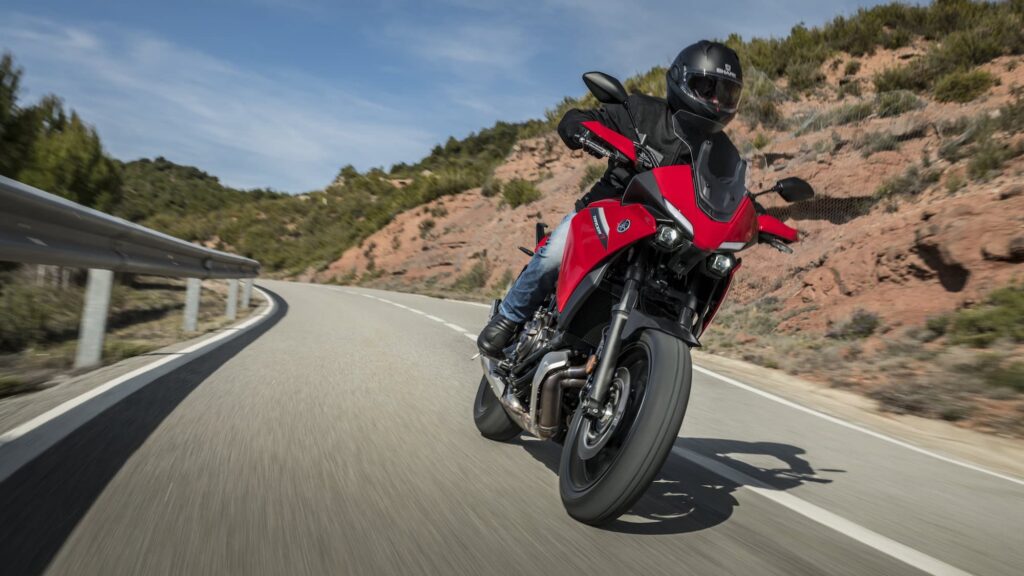
The Yamaha Tracer 7 is an extremely popular bike, one of the highest-selling motorcycles in Europe, along with its predecessor the Tracer 700.
The Tracer 7 is popular because — especially for Europe — it strikes an excellent balance between economy, sportiness, and practicality.
It’s popular because it’s economical, sporty, and practical. It looks decent and it even sounds great — especially when the exhaust is liberated a little…
The core of the Yamaha Tracer 7 is the same CP2 engine that we see in some of Yamaha’s other very popular motorcycles. The engine is a liquid-cooled 689cc parallel twin with four valves per cylinder and dual overhead cams. For many, the CP2 engine is the perfect engine for many scenarios, from everyday commuting to light sporting.
The Yamaha Tracer 7’s engine, being in Euro 5 tune, makes a shade lower 54 kW (73 hp) of power at 8750 rpm. But more importantly, the torque curve of the Tracer 7’s engine remains in place, with around 90% of its peak torque between 2500 and 8000 rpm, which is exactly where people ride every day.
The Yamaha Tracer 7, unlike the Yamaha Ténéré 700 is a road-oriented sport touring bike. It has an upright riding position and some protection, but it’s neither a sport bike nor an off-roader.
Ground clearance for the Tracer 700 is much like other road bikes, and it doesn’t have a stock belly pan to protect it from scrapes.
The front brakes on the Yamaha Tracer 7 are twin 298 mm units (slightly bigger than those on its predecessor) with four-piston calipers, and ABS is standard. As you might expect on a modest-spec bike, the front suspension is a non-adjustable conventional (non-inverted) fork, and the rear shock is just adjustable for preload. Still, the suspension is very capable and is what most riders need.
Maintaining the Yamaha Tracer 7 is painless. Mostly, it’ll just need oil changes every 10000 km, with an oil filter change every 20000 km. You also have to replace the coolant and brake fluid periodically, but that’s it.
At 40000 km there’s a valve inspection, but it’s rare that the CP2 engine will need valve shims. Anyway, it’s a mercifully non-difficult task as the Tracer 7 has a parallel twin engine with just one cylinder head.
Yamaha has improved the style of the Tracer 7, but the Yamaha Tracer 9 has crept up and up in terms of spec differences, making it a very different bike. Aside from the 889-cc CP3 engine, the Yamaha Tracer 9 has active suspension, cruise control, an IMU, and even radar-assisted cruise control (in the GT+ spec) from 2023.
References — Manual for the Yamaha Tracer 7
Below are screenshots of the maintenance schedule from the manual for the Yamaha Tracer 7 for reference in case you want to consult the original.
You can also see the manual for the Tracer 7 below.
You can download it from Yamaha’s website here.
